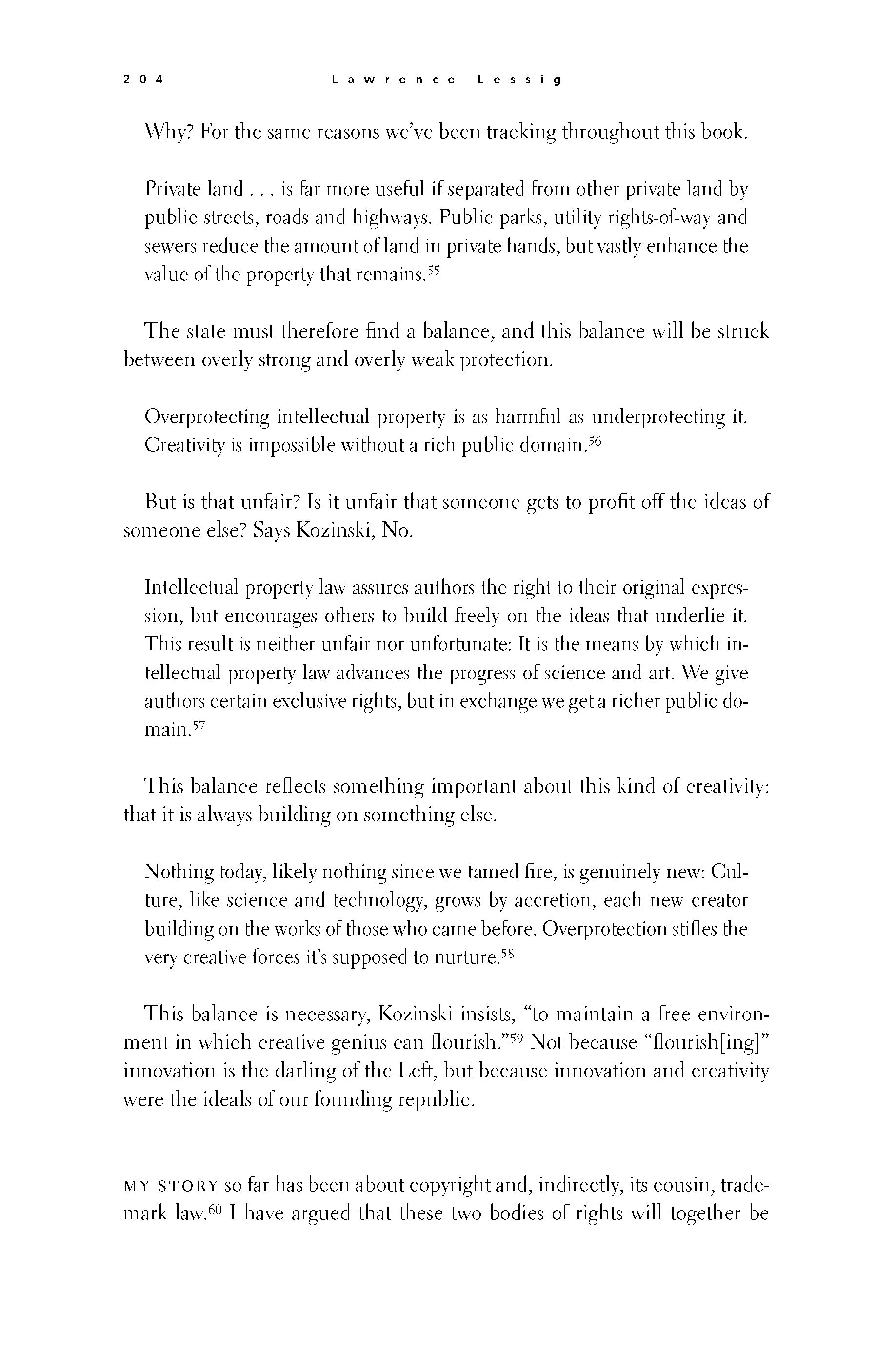 p203 _
-chap- _
toc-1 _
p204w _
toc-2 _
+chap+ _
p205
p203 _
-chap- _
toc-1 _
p204w _
toc-2 _
+chap+ _
p205
Why? For the same reasons we've been tracking throughout this book.
____ Private land... is far more useful if separated from other private land by
____ public streets, roads and highways. Public parks, utility rights-of-way and
____ sewers reduce the amount of land in private hands, but vastly enhance the
____ value of the property that remains.[11-55]
The state must therefore find a balance, and this balance will be struck
between overly strong and overly weak protection.
____ Overprotecting intellectual property is as harmful as underprotecting it.
____ Creativity is impossible without a rich public domain.[11-56]
But is that unfair? Is it unfair that someone gets to profit off the ideas of
someone else? Says Kozinski, No.
____ Intellectual property law assures authors the right to their original expres-
____ sion, but encourages others to build freely on the ideas that underlie it.
____ This result is neither unfair nor unfortunate: It is the means by which in-
____ tellectual property law advances the progress of science and art. We give
____ authors certain exclusive rights, but in exchange we get a richer public do-
____ main.[11-57]
This balance reflects something important about this kind of creativity:
that it is always building on something else.
____ Nothing today, likely nothing since we tamed fire, is genuinely new: Cul-
____ ture, like science and technology, grows by accretion, each new creator
____ building on the works of those who came before. Overprotection stifles the
____ very creative forces it's supposed to nurture.[11-58]
This balance is necessary, Kozinski insists, "to maintain a free environ-
ment in which creative genius can flourish."[11-59] Not because "flourish[ing]"
innovation is the darling of the Left, but because innovation and creativity
were the ideals of our founding republic.
///\\\
My story so far has been about copyright and, indirectly, its cousin, trade-
mark law.[11-60] I have argued that these two bodies of rights will together be
[[204]]
p203 _
-chap- _
toc-1 _
p204w _
toc-2 _
+chap+ _
p205